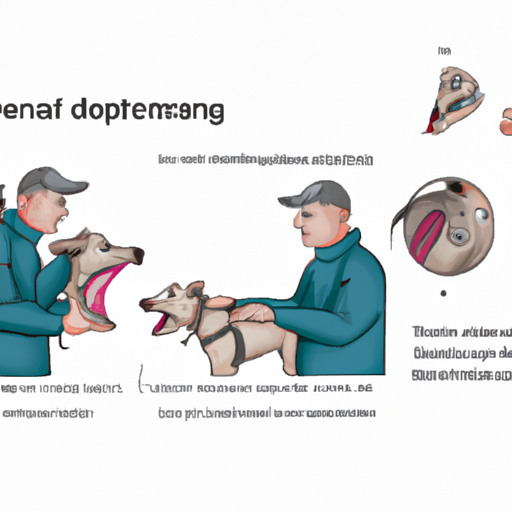As a caregiver, you understand the value of knowing how to handle emergency situations. This guide will provide you with the necessary knowledge to help your furry friend if they ever get something stuck in their throat.
H2: Recognizing the Signs
Your dog cannot tell you they have something lodged in their throat, so it’s crucial that you understand the signs. Some of the symptoms include:
- Excessive drooling
- Coughing or gagging
- Pawing at the mouth
- Difficulty swallowing
- Choking noises
- Anxiety or panic
Being able to recognize these signs promptly can make a significant difference in your dog’s wellbeing.
H2: Immediate Actions
Next, let’s discuss the steps you should take if you suspect your dog has an obstruction in their throat.
- Stay Calm: Your dog will pick up on your emotions. If you panic, they will too, making the situation worse.
- Open the Dog’s Mouth: Be cautious as you do this, as scared dogs may bite.
- Check for the Obstruction: If you can see it, attempt to remove it gently using tweezers or pliers.
H2: The Heimlich Maneuver for Dogs
If the previous steps do not work, you may have to perform a modified version of the Heimlich maneuver.
- Position the Dog: Stand or kneel behind the dog, depending on their size.
- Locate the Rib Cage: Place your hands just below the rib cage.
- Push Upward and Forward: Do this quickly and firmly, but be careful not to exert too much force.
Please note that the Heimlich maneuver should be used as a last resort and only if you are confident in your ability to perform it without causing further harm.
H2: Aftercare
Once the obstruction has been removed, it’s important to follow up with aftercare.
| Aftercare Steps | Description |
|---|---|
| Monitor your dog closely | Check for any changes in behavior, eating, or drinking habits |
| Seek veterinary care | A vet can check for any internal injuries caused by the obstruction or the removal process |
| Prevent future occurrences | Keep small objects out of reach, supervise meal times, and consider dog-proofing your home |
H2: Prevention is Key
While it’s important to know how to respond to emergencies, prevention should always be your first line of defense. This includes:
- Regular training
- Supervised playtime
- Regular veterinary check-ups
- Dog-proofing your home
By taking these preventative measures, you can drastically reduce the chances of your dog swallowing a foreign object.
FAQ
Q: Should I try to remove an object from my dog’s throat myself?
A: If the object is clearly visible and easily reachable, you can try to gently remove it. If not, seek professional help immediately.
Q: What if my dog is unconscious?
A: Start CPR and get to the vet as quickly as possible.
Q: How can I prevent my dog from swallowing foreign objects?
A: Regular training, supervised playtime, regular vet check-ups and dog-proofing your home can all help to prevent this.
Remember, when it comes to your pet’s health, it’s always best to err on the side of caution. If in doubt, contact a veterinary professional right away.



